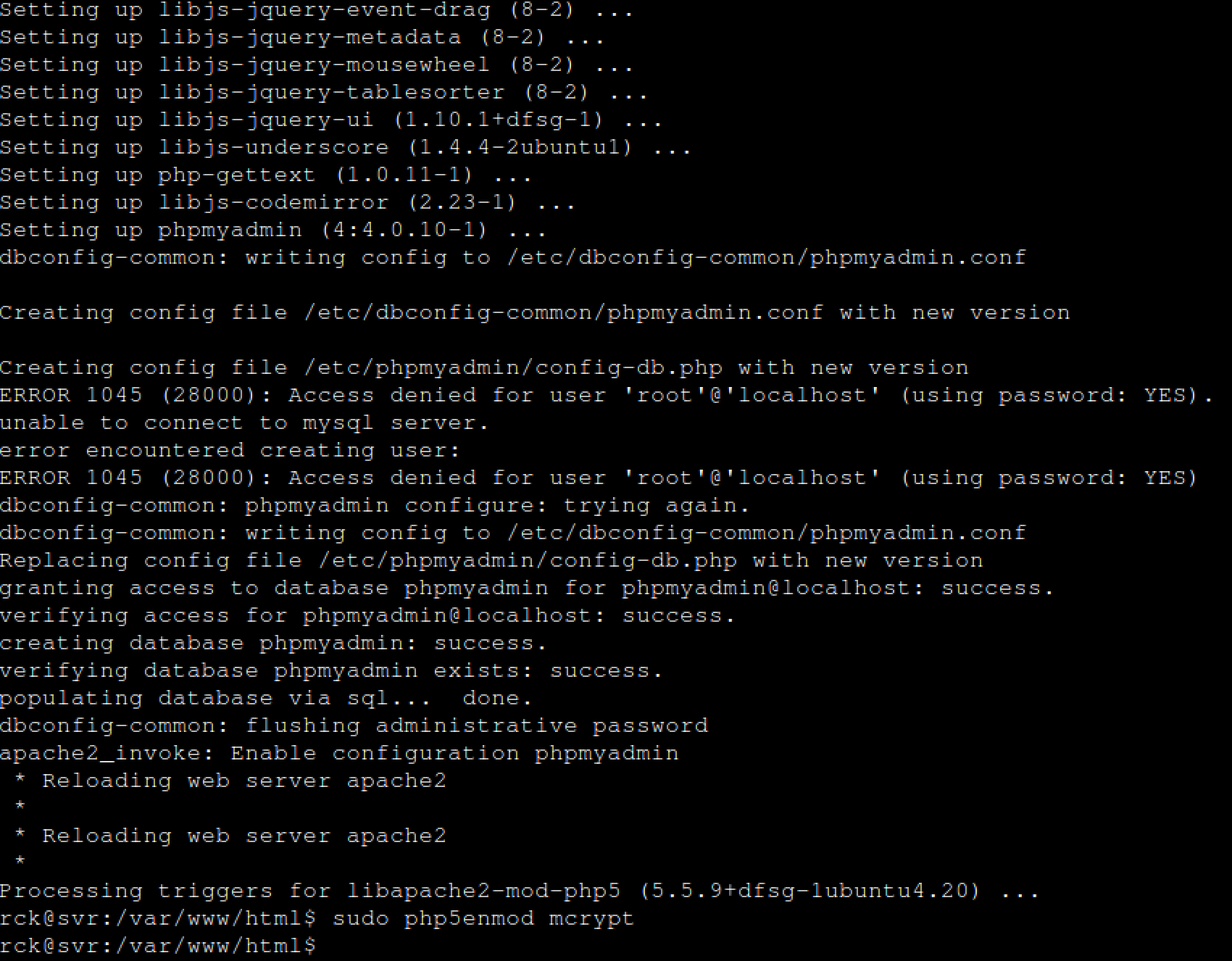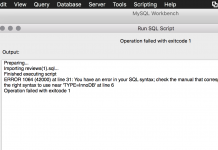Try:
mysql -u username -p database_name < file.sql
Note: It is better to use the full path of the SQL file file.sql.
mysql Options
mysql supports the following options, which can be specified on the command line or in the [mysql] and [client] groups of an option file.
| Format | Description | Introduced | Deprecated |
|---|---|---|---|
| –auto-rehash | Enable automatic rehashing | ||
| –auto-vertical-output | Enable automatic vertical result set display | ||
| –batch | Do not use history file | ||
| –binary-mode | Disable \r\n – to – \n translation and treatment of \0 as end-of-query | ||
| –bind-address | Use specified network interface to connect to MySQL Server | ||
| –character-sets-dir | Directory where character sets are installed | ||
| –column-names | Write column names in results | ||
| –column-type-info | Display result set metadata | ||
| –comments | Whether to retain or strip comments in statements sent to the server | ||
| –compress | Compress all information sent between client and server | ||
| –connect-expired-password | Indicate to server that client can handle expired-password sandbox mode. | 5.7.2 | |
| –connect_timeout | Number of seconds before connection timeout | ||
| –database | The database to use | ||
| –debug | Write debugging log; supported only if MySQL was built with debugging support | ||
| –debug-check | Print debugging information when program exits | ||
| –debug-info | Print debugging information, memory, and CPU statistics when program exits | ||
| –default-auth | Authentication plugin to use | ||
| –default-character-set | Specify default character set | ||
| –defaults-extra-file | Read named option file in addition to usual option files | ||
| –defaults-file | Read only named option file | ||
| –defaults-group-suffix | Option group suffix value | ||
| –delimiter | Set the statement delimiter | ||
| –enable-cleartext-plugin | Enable cleartext authentication plugin | ||
| –execute | Execute the statement and quit | ||
| –force | Continue even if an SQL error occurs | ||
| –help | Display help message and exit | ||
| –histignore | Patterns specifying which statements to ignore for logging | ||
| –host | Connect to MySQL server on given host | ||
| –html | Produce HTML output | ||
| –ignore-spaces | Ignore spaces after function names | ||
| –init-command | SQL statement to execute after connecting | ||
| –line-numbers | Write line numbers for errors | ||
| –local-infile | Enable or disable for LOCAL capability for LOAD DATA INFILE | ||
| –login-path | Read login path options from .mylogin.cnf | ||
| –max_allowed_packet | Maximum packet length to send to or receive from server | ||
| –max_join_size | The automatic limit for rows in a join when using –safe-updates | ||
| –named-commands | Enable named mysql commands | ||
| –net_buffer_length | Buffer size for TCP/IP and socket communication | ||
| –no-auto-rehash | Disable automatic rehashing | ||
| –no-beep | Do not beep when errors occur | ||
| –no-defaults | Read no option files | ||
| –one-database | Ignore statements except those for the default database named on the command line | ||
| –pager | Use the given command for paging query output | ||
| –password | Password to use when connecting to server | ||
| –pipe | On Windows, connect to server using named pipe | ||
| –plugin-dir | Directory where plugins are installed | ||
| –port | TCP/IP port number to use for connection | ||
| –print-defaults | Print default options | ||
| –prompt | Set the prompt to the specified format | ||
| –protocol | Connection protocol to use | ||
| –quick | Do not cache each query result | ||
| –raw | Write column values without escape conversion | ||
| –reconnect | If the connection to the server is lost, automatically try to reconnect | ||
| –i-am-a-dummy, –safe-updates | Allow only UPDATE and DELETE statements that specify key values | ||
| –secure-auth | Do not send passwords to server in old (pre-4.1) format | 5.7.5 | |
| –select_limit | The automatic limit for SELECT statements when using –safe-updates | ||
| –server-public-key-path | Path name to file containing RSA public key | ||
| –shared-memory-base-name | The name of shared memory to use for shared-memory connections | ||
| –show-warnings | Show warnings after each statement if there are any | ||
| –sigint-ignore | Ignore SIGINT signals (typically the result of typing Control+C) | ||
| –silent | Silent mode | ||
| –skip-auto-rehash | Disable automatic rehashing | ||
| –skip-column-names | Do not write column names in results | ||
| –skip-line-numbers | Skip line numbers for errors | ||
| –skip-named-commands | Disable named mysql commands | ||
| –skip-pager | Disable paging | ||
| –skip-reconnect | Disable reconnecting | ||
| –socket | For connections to localhost, the Unix socket file to use | ||
| –ssl | Enable secure connection | ||
| –ssl-ca | Path of file that contains list of trusted SSL CAs | ||
| –ssl-capath | Path of directory that contains trusted SSL CA certificates in PEM format | ||
| –ssl-cert | Path of file that contains X509 certificate in PEM format | ||
| –ssl-cipher | List of permitted ciphers to use for connection encryption | ||
| –ssl-crl | Path of file that contains certificate revocation lists | ||
| –ssl-crlpath | Path of directory that contains certificate revocation list files | ||
| –ssl-key | Path of file that contains X509 key in PEM format | ||
| –ssl-mode | Security state of connection to server | 5.7.11 | |
| –ssl-verify-server-cert | Verify server certificate Common Name value against host name used when connecting to server | ||
| –syslog | Log interactive statements to syslog | 5.7.1 | |
| –table | Display output in tabular format | ||
| –tee | Append a copy of output to named file | ||
| –tls-version | Protocols permitted for secure connections | 5.7.10 | |
| –unbuffered | Flush the buffer after each query | ||
| –user | MySQL user name to use when connecting to server | ||
| –verbose | Verbose mode | ||
| –version | Display version information and exit | ||
| –vertical | Print query output rows vertically (one line per column value) | ||
| –wait | If the connection cannot be established, wait and retry instead of aborting | ||
| –xml | Produce XML output |





